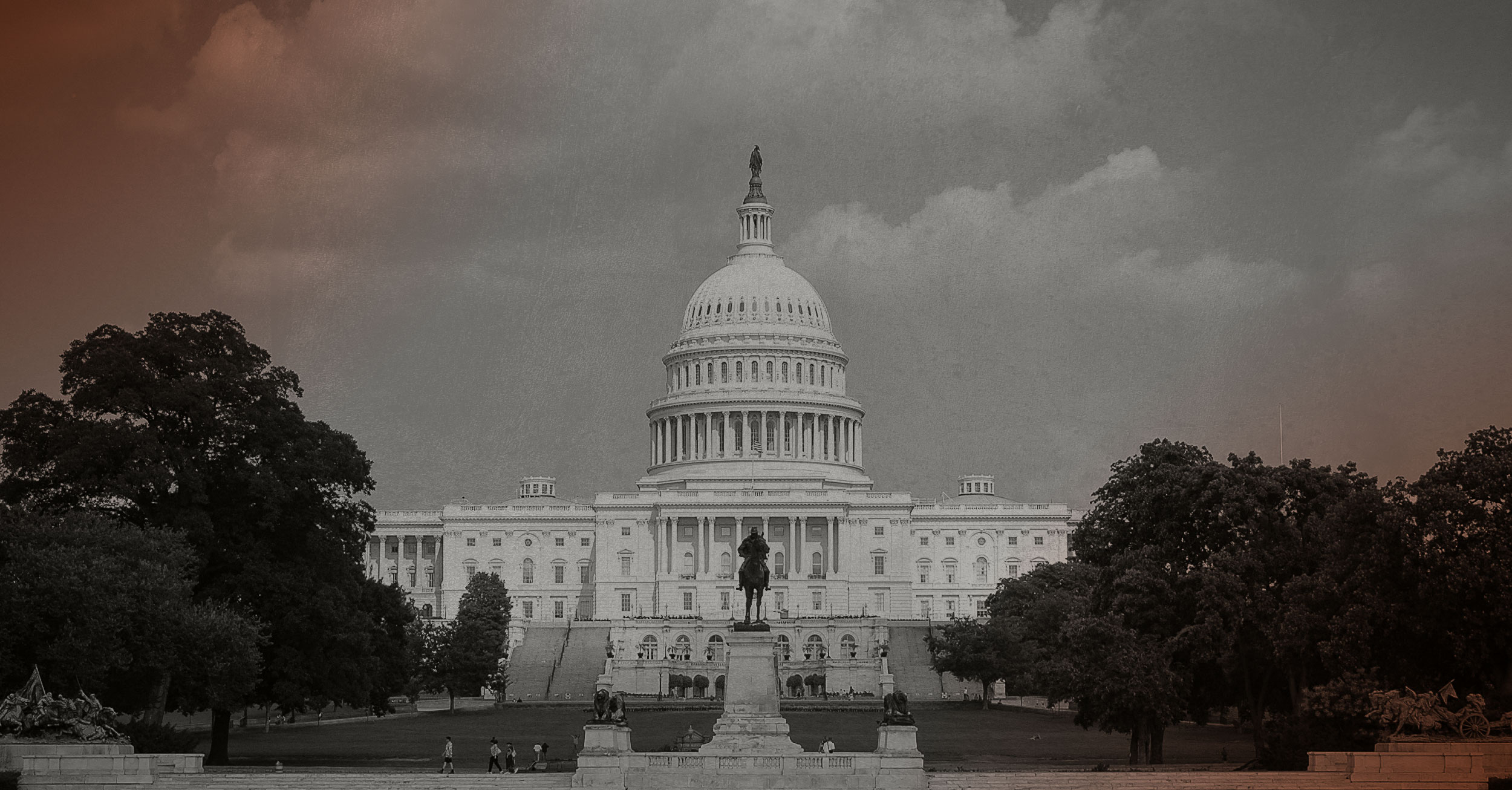
In recent weeks, Robert F. Kennedy Jr. has been on a whirlwind tour attempting to convince the public and the Senate that he is right for the job of Secretary of Health & Human Services. However, Kennedy’s embrace of nutty medical misinformation and conspiracy theories, combined with his empty resumé, makes it clear that he is utterly unqualified to run HHS and would be an unmitigated disaster for American health care.
One of his lesser-known conspiracy theories involves a wildly outlandish set of beliefs surrounding Lyme disease. He has claimed that the tick-borne illness is a military bioweapon and blamed vaccine research for creating the disease. There is still no vaccine for Lyme disease, in part due to the same misinformation pushed by Kennedy about vaccines supposedly causing the illness. Lyme disease is a serious illness with cases primarily concentrated in New England that impacts nearly 500,000 people every year. The disease can lead to distressing and even disabling symptoms in 10 to 20 percent of cases, and reportedly has an annual cost of diagnosis and treatment totalling almost $1 billion. Kennedy’s bizarre stances about a serious disease that impacts thousands of Americans annually demonstrate the real threat he poses to public health.
Kennedy Spread A Conspiracy Theory Claiming That It Was “Highly Likely” That Lyme Disease Was A Military Bioweapon. During an episode of his podcast discussing Lyme disease, Kennedy launched into a tirade about the disease supposedly being a bioweapon: “Another thing that keeps us from enjoying the outdoors and keeps us locked inside and the idea that this may have been, is highly likely to have been a military weapon, and we cannot say 100 percent for sure, but we do know that they were experimenting with tics there. The tics, as you show, are an epidemic because of what happened at Plum Island and the other labs. […] We also know that they were experimenting with diseases of the kind, like Lyme disease, at that lab, and they were putting them in tics and then infecting people.
- Kennedy’s Bioweapon Conspiracy Theory Has Been Discredited. The conspiracy theory that Lyme disease was supposedly created by the U.S. military as a bioweapon has been thoroughly debunked. The American Lyme Disease Foundation wrote, “Some claim that Lyme disease was introduced into the northeastern region of the U.S. by a man-made strain of Borrelia burgdorferi that escaped from a high containment biological warfare laboratory on Plum Island. However, there is ample evidence to indicate that both Ixodes ticks and B. burgdorferi were present in the U.S. well before the Plum Island facility was ever established.” According to a Washington Post op-ed written by infectious disease professor Sam Telford, “It’s an old conspiracy theory enjoying a resurgence with lots of sensational headlines and tweets. Even Congress has ordered that the Pentagon must reveal whether it weaponized ticks. And it’s not true.”
RFK Jr. Blamed Vaccine Gain-Of-Function Research For The Creation Of Lyme Disease. As Rolling Stone reported, Kennedy convened a panel of health misinformation advocates in 2023, during which they discussed the origins of infectious disease and their relationship to vaccines: “At one point, he baselessly asserted that vaccine research had been responsible for the creation of some of the deadliest diseases in human history, including HIV, the Spanish flu, and Lyme disease.” Kennedy reportedly also promised he would “end all gain-of-function research…It’s just a disaster, it’s given us no benefits. It’s given us everything from Lyme disease to Covid, and many many other diseases. RSV, which is now one of the biggest killers of children, came out of a vaccine lab.”
- The Previous Lyme Disease Vaccine Was Pulled In Part Because Of The Same Type of Misinformation Spread By Kennedy. Dr. Robert Smith of MaineHealth said that the previous Lyme disease vaccination, which was on the market in the mid-90s, was removed from the market in part because of misinformation that the vaccine caused the very disease it was intended to cure. According to the Portland Press Herald, “There were a number of reasons the previous human vaccine was removed from the market, Smith said, including misinformation that the vaccine caused Lyme disease, and that the disease had not reached the high number of cases now being reported, especially in the Northeast. Knight said the new vaccine will likely be more effective than the previous one, which was only on the market for a few years starting in the late 1990s.”
KEY STATES
Maine Has Among Highest Rates of Lyme Disease and Is The Site Of Ongoing Vaccine Trials And A Lyme Disease Study. According to the CDC, Maine has some of the highest rates of Lyme disease in the nation. There were 2,544 cases reported in the state by October 2024, nearing the state annual record of 2,943 cases in 2023. Maine was also a key state in vaccine trials and a large study of the disease. MaineHealth has been helping test a new version of the Lyme disease vaccine after the previous one was pulled from the market in the mid-90s. The manufacturer of this new vaccine, Pfizer, reportedly chose Maine as its site for clinical trials due to the state’s high rate of Lyme disease: “Pfizer has partnered with a Maine health care system to conduct the third phase of a Lyme disease clinical trial to test the efficacy of the company’s vaccine. The trial, held at Northern Light Health system in Brewer, will span over 13 months and require patients to take two shots two months apart. In March, the patients will need to take a booster shot before the next summer’s tick season, The Bangor Daily News reported last week. […] Li said Pfizer approached the hospital system about the clinical trial because Maine has one of the highest rates of Lyme disease infections in the U.S., according to the Centers for Disease Control and Prevention.”
Rhode Island Has The Highest Incidence Rate of Lyme Disease and Continues to Trend Upwards. Rhode Island has the highest incidence rate of Lyme disease in the country, with 212 cases per 100,000 in the state in 2022. The years of 2021 and 2022 marked a massive increase in reported Lyme disease diagnoses with 2,617 cases reported in 2021 and 2,904 cases in 2022. In 2023 that number fell slightly to 2,852 cases reported but now evidence has shown that 2024 may have been the largest jump in annual cases reported in the last decade. This past year a whopping 3,218 cases were reported, a nearly 13 percent increase in the span of only one year. Studies have shown that climate change and the warmer winters in Rhode Island has had a direct impact on the number of tick-borne illness reports. A supermajority of Americans support not only a vaccine for Lyme disease but also vaccinating their children against it; however, Republicans like RFK Jr. continue to promote conspiracy theories even as rarer tick-borne illnesses like Powassan virus are becoming more and more prevalent alongside Lyme disease diagnoses.
Connecticut is Where Lyme Disease was First Discovered and Remains the Leader in the Uphill Fight Against Both Anti-Vaxxers like RFK Jr. and the Disease Itself. Connecticut is in the top ten states when it comes to Lyme disease transmission. Between the years of 1985 and 2017, the Connecticut Department of Public Health (DPH) reported an average of 2,718 cases of Lyme disease annually with a high count of 4,631. This pales in comparison to new research coming from the CDC on underreporting problems, which suggests that potentially 10 times as many people in Connecticut, around 30,000, could be infected with Lyme disease annually. Recent studies have shown the tick population as well as the prevalence of tick-borne illnesses are on the rise in Connecticut, with climate change’s effects of shortening winters and longer summers playing a major role in this development. DPH has reported that 26.5 percent, more than one in four, of the ticks they’ve tested have come back positive for Lyme disease; on top of this there are now reports of “trifecta infections” from tick bites, with doctors seeing a massive increase in symptoms and diagnoses, including the first report of a human Rickettsia parkeri case. As anti-vaccine rhetoric and policy from Republicans like RFK Jr. continues to grow it is imperative to reject in order to continue and expand the fight against tick-borne illnesses.
Lyme Disease Is Skyrocketing In Massachusetts, With Over 5,000 Cases In 2022. Massachusetts is by far the most populous state in New England, with a high population density translating to a high risk for tick exposure in the state. Lyme disease cases in Massachusetts have been skyrocketing recently, with state health officials reporting over 5,000 cases in 2022. Though this rise was in part attributable to recent methodological changes and improved data collection, the new numbers reflect better disease surveillance in the state and paint a clear picture of the serious threat Lyme disease poses in Massachusetts.
New Hampshire Has A High Rate of Lyme Disease. New Hampshire has one of the highest rates of Lyme disease in the U.S., reporting 1,563 cases in 2021, an incidence rate of 112.5. The disease was rare until the past two decades, with less than 300 cases reported every year before 2006. Since then, the number of annual cases reported in New Hampshire has never dropped below 600.
Lyme Disease Rates Are Rising In Vermont As Ticks Spread North With Urban Development. Vermont has a high rate of Lyme disease, with an increasing rate of annual reported cases over the past 20 years. Tickborne illnesses were rare in the 1990s in Vermont, but as of 2019, Vermont’s 3-year average incidence rate for Lyme disease was the second-highest in the country. In 2022, 1,312 cases were reported. Around half of all ticks studied are pathogen-carrying in the state, and urban development in northern Vermont has reportedly expanded the tick population to new parts of the state.














